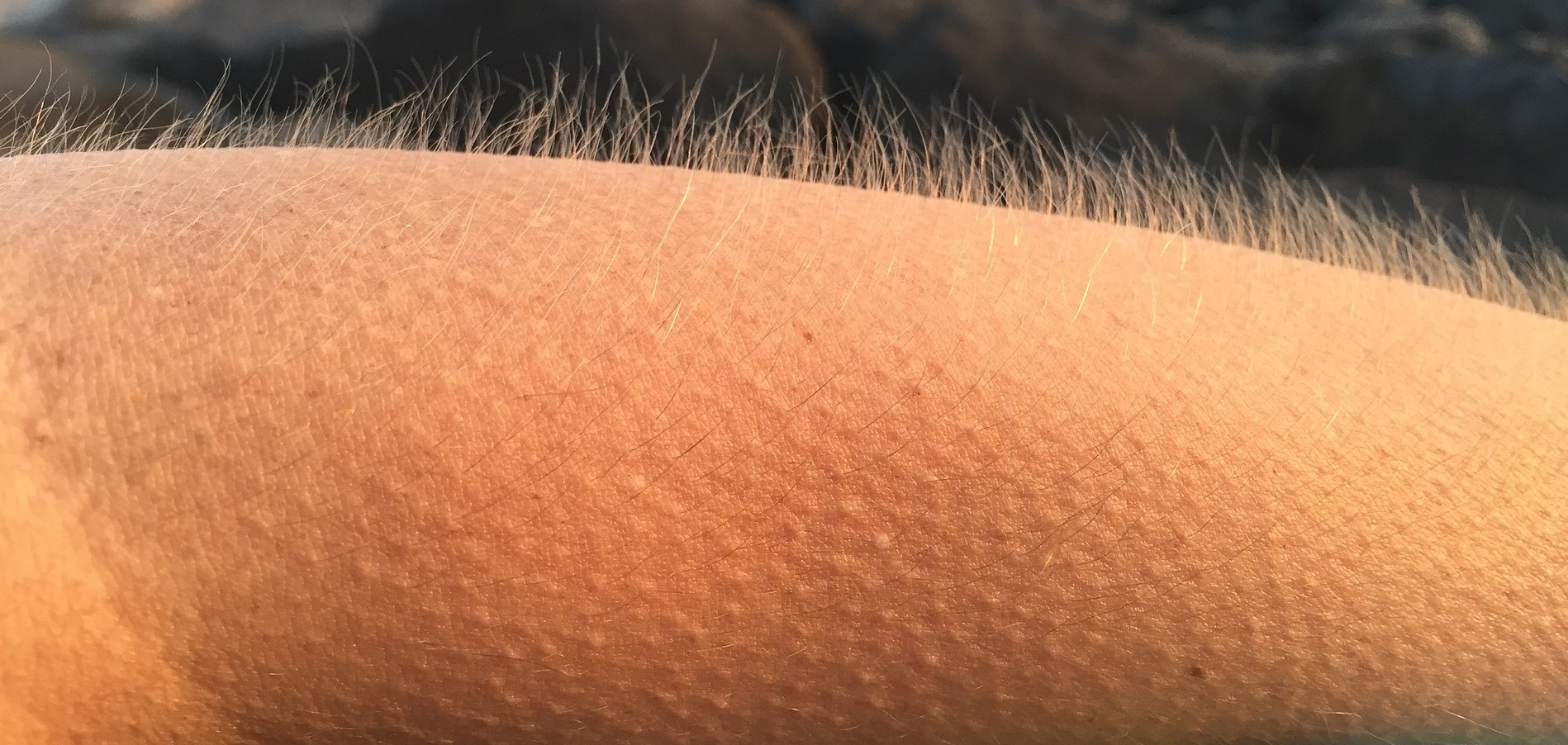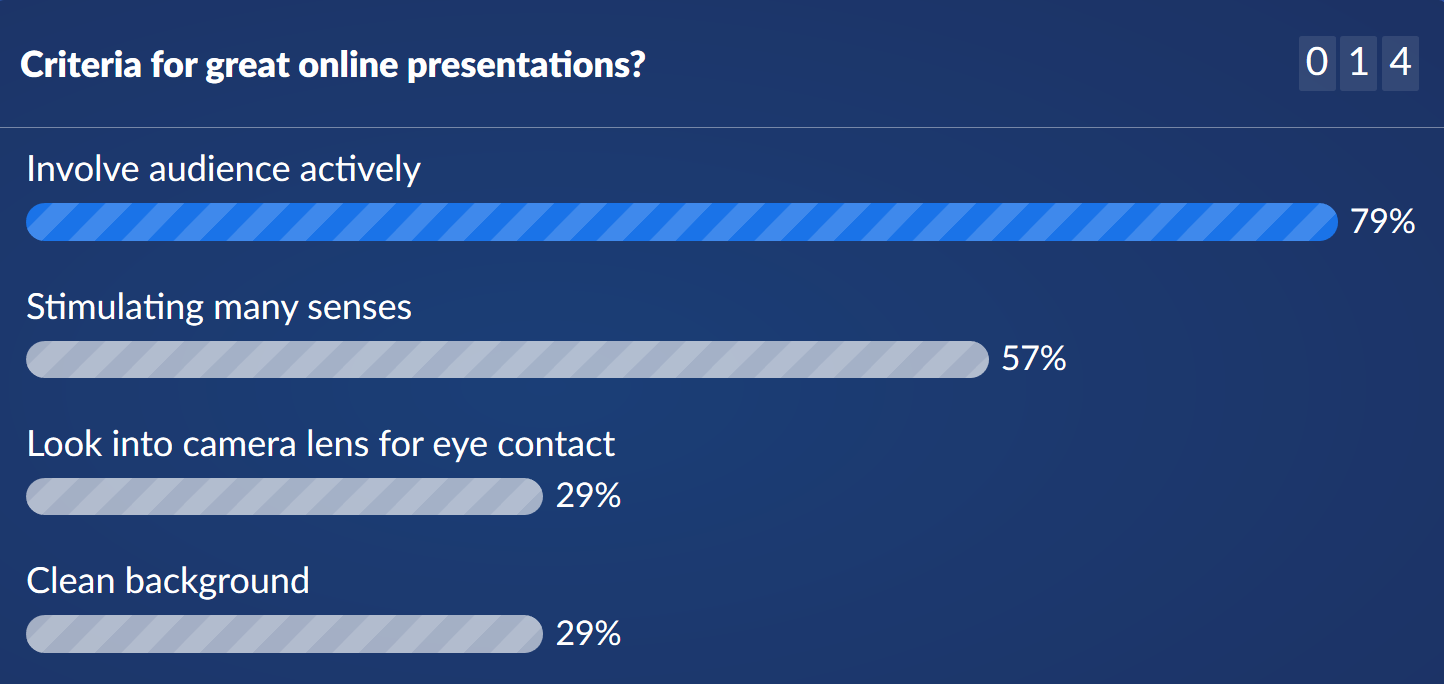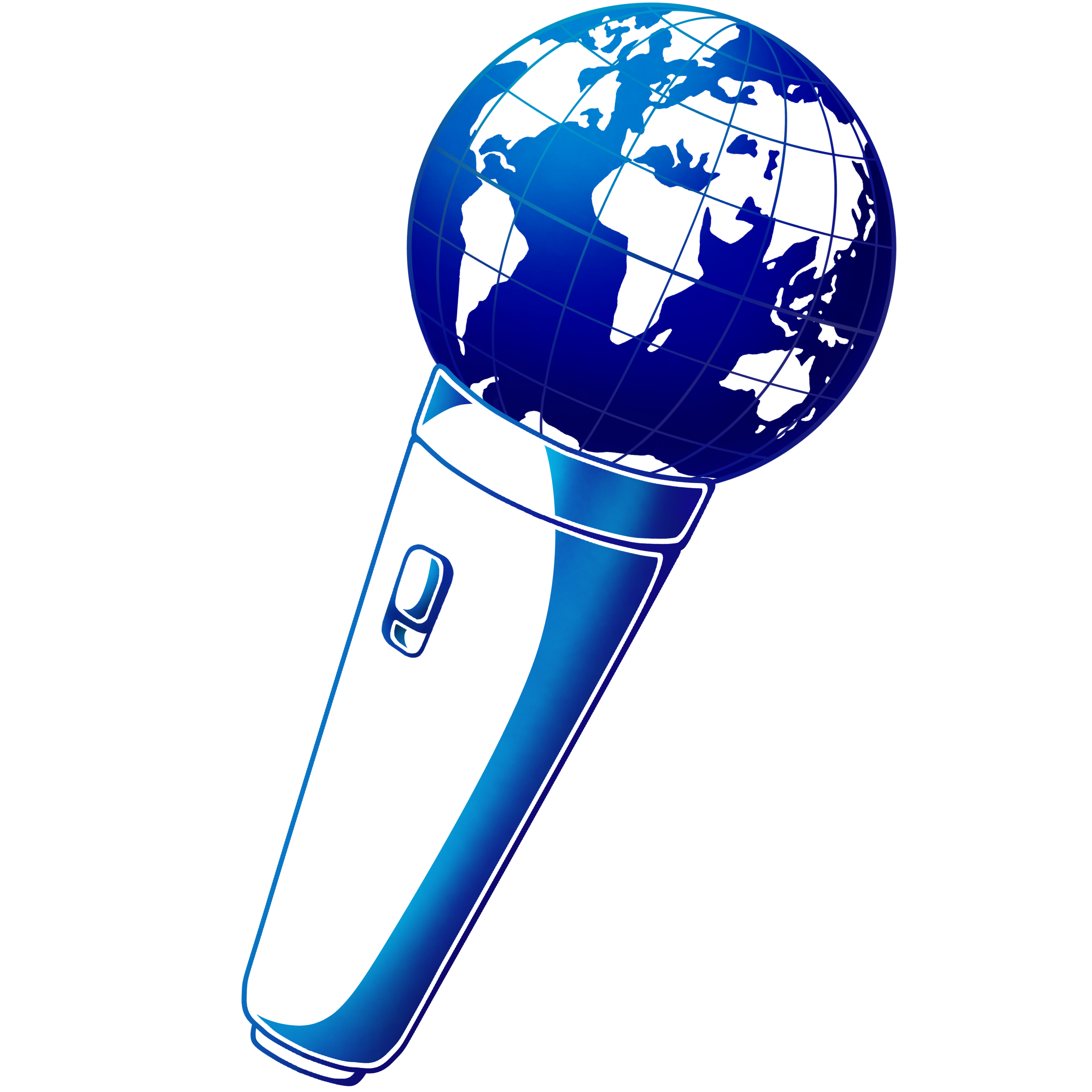Too many people are satisfied with mediocrity. Some people work on themselves becoming better than average. Only a few people take the chance to achieve outstanding and excellent results. This is why I repeatedly see speeches in which the potential for excellence is ignored or disregarded. This is where I will address ten of the key criteria for tapping into your full speaking potential. And yes, of course there are some other criteria that we could also list in here.
A powerful intro opens the door to your audience
Instead of the old-fashioned “Dear Ladies and Gentlemen…” with long thanks or apologies, you go straight into your topic. You can directly present your conclusion and the latest findings from your project and then prove them. Or you build a bridge by referring to the current day. If your presentation takes place on November 10th, you can highlight the “World Science Day” of UNESCO and link to your actual topic. Wikipedia offers many more suggestions for the days in question. Professional speakers love to start with direct questions to the audience. This is fine as long as it does not turn into a rhetorical marathon of questions. You could also refer to a current or local event that also affects your local audience.
People love stories. If you start with a personal story, your audience will listen to you attentively. What used to be taboo has become more important again in recent years: Those who share emotions with their audience appear particularly authentic and thus credible.
Share your enthusiasm: Personality wins
Are you enthusiastic about your topic? Or do you present something that leaves you cold, that does not touch you at all? A presentation can be factually correct and at the same time bloodless. I have experienced both in my own speeches. Those that did not match my interest were also badly received by the audience. Not only I myself felt relieved when the session was over. I hardly knew the topic, and besides, I did not belong to the tribe – the audience could sense that. Conversely, I knew the contents of my scientific topics inside and out, of course. The well-prepared ones were also my best speeches. Here I relived some personal highlights during my speech. Accordingly, I moved dynamically on stage, my voice was all the brighter and more vivid than in “normal” speeches. The enthusiasm was contagious, as my audience later confirmed.
It pays off positively if you think about what you like most about your topic in advance. Are there special moments when you are completely absorbed in your work? Where do you get emotional? You can incorporate such moments into your presentation, either with short anecdotes or a longer story that runs like a golden thread through your presentation. The key here is not to make general statements, but to be as specific as possible.
Express five plus more senses
How do you become specific? By addressing as many senses as possible: If you talk about cars, you can play the roaring sound of the specific engine or even imitate it with your own voice. Are there any moments of goose bumps when you are particularly emotional and can express it to your audience? This can be the moment of a special discovery or when your life or the direction of an entire industry has changed. If you are a farmer, you can describe many smells from a stinking dung heap to a freshly harvested aromatic potato. If healthy nutrition is your topic, you can bite into a sour lemon. You will automatically screw up your face, and your audience will feel the taste. These are moments that will be remembered by everyone.

There is more than just the classic five senses: How do you perceive temperatures? You can describe the bone-chilling cold or the baking heat with sparkling drops of sweat, as well as your feeling for heaviness and tension, for power and speed. You can describe pain with words like blackout, nausea (“I felt terribly sick”) or dizziness. Physical processes such as acceleration or gravity are another possible component, for example if you have already done a parachute jump or bunjee-jumping yourself. How do you describe physical tension like high blood pressure or sore muscles? What do hunger and thirst mean to you? Do you have an appetite for a juicy, breaded schnitzel or a crisp, spicy salad? The list can be continued endlessly.
Create a spectacular film for your audience
The more detailed you can describe individual facets of scientific processes, the more an audience from outside the field will follow you. Just as you can address several senses, the vivid description will help to describe your topic. There are good reasons why those products which tell their own story in advertising are sold successfully.
How do you want to share your story? With vivid language your voice becomes more variable. This way you sound more expressive and your body language will be more vibrant without any artificial training. Of course you can also show meaningful images as slides or share video clips from an experiment to add variety.
Communication at eye level is important live and virtually
By this I mean two aspects: On the one hand, it is important to speak the same language as our audience. Speaking among experts, we include more technical terms. If we address a broader audience, however, we can also use the broadcast with “The-Show-with-the-Mouse-Effect”: Simply and in few words explained. Here we use again pictorial language. If the audience is mixed, it makes sense for us to describe only the main topics in depth and also in technical language, while anything else is presented in easy language. This way we pick up both experts and non-experts without making our audience look bad.
But eye level also means that we do not treat our audience condescendingly. This can be observed very well in online presentations: Many speakers speak while sitting and look down on the screen from above. Unconsciously, the audience feels uncomfortable with this. In contrast, I always set up my online stage so that I can look straight ahead into the camera lens. Since I present in a standing position and do not yet have a height-adjustable desk, I help myself out with a chair and books with my laptop on it – with the external camera at eye level. When I use my smartphone camera, I use a tripod.
Understand your audience, and you will be understood
Your voice reveals your personality: it contains many different facets such as voice volume and tempo, timbre, intonation and pauses.
Volume is of course important since you want to be heard. Soft voices are still understood in the absence of overlapping background noises. If you are speaking at a high tempo, you seem rushed for your audience. This often happens at the beginning of a presentation, when the speaker is nervous and has to find himself. This is where mental preparation and personal attunement in the run-up helps: Do you already see yourself communicating masterfully with your audience on stage? Maybe you want to squeeze too much content into a short time. The only thing that helps is to cut out content. My motto is here: “Less is more”. Really concentrate on what is essential.
Dynamic presentations change in tempo. This allows to stress important content in a slower and more sustained way. A timbre with a melodic voice including changing highs and lows appears dynamic and anything but monotonous. Specific voice training helps in the preparation, in which you consciously go into extreme highs and lows. With the enthusiasm for the topic, your voice will also appear dynamic. If you want to articulate yourself clearly, you can help yourself with the classic cork exercise and complex word games. There are numerous instructions from speech-language pathologists that can be easily integrated when preparing your speech. A clear voice is even more important online than in a live speech, because our voice is reproduced somewhat distorted online. This is where technology comes in: use an external microphone or headset to ensure that the quality of the voice transmission is maintained. A good preparation is therefore especially important with regard to your voice.
Not least, breaks are a wonderful stylistic device. Pauses can emphasize important content and allow your audience time to reflect. Pauses are ideally used as a transition between different sections of your presentation.
Engage your audience
I have fond memories of my time at scientific conferences: Ideal as a networking opportunity and to meet many people personally. The sessions consist of six to eight speeches each. Each presentation lasts about 15 minutes, followed by five minutes of discussion time. This way, the interaction is already based on organizational matters.
You can engage your audience in the speech itself. This can be direct or rhetorical questions, but it can also be real questions with a dialog prior to the official discussion. It adds up variety, especially with longer speeches. It also demonstrates a speaker’s self-confidence to be able to get involved in surprising statements. It also enhances the personal, external component of your presentation.

You can also include brief polls to find out what your audience thinks: “Who of you is for…?” – “And who believes that…?” You intervene in the opinion directly or later in the presentation. Another technical possibility is the integration of electronic surveys, for example with programs such as Slido, Mentimeter or a simple Zoom survey – there are numerous other survey tools available. An advantage is the real-time display of results and a more precise opinion which you even may use for future presentations. On the other hand, it is challenging that not everyone may have direct online access, that the server of the organizer is overloaded or that additional time is needed.
Display lean slides speak with plain language
I cannot emphasize this often enough: If you present with PowerPoint, pay attention to lean slides. In my seminars and, of course, at conferences, there are many who still use their slides as script or show highly complex illustrations without explaining them in detail. They take it for granted that their audience will immediately understand everything. Complex illustrations are okay as long as you build them up step by step and give your audience a chance to follow you in terms of content. To do this, you leave out everything unnecessary on the slides and focus on the essential content only.
Note: Only share one important piece of information, only one message per slide. A PowerPoint presentation is different from an extensive poster presentation. Many years ago I myself showed a slide with eight microscope photos – a real overkill! My tip: Show only one, maximum two photos per slide. In individual cases, more is possible at best as a summarizing overview.
It is best to leave out any of the infamous bullet points. They often serve as a cheat sheet for the speaker, while your audience will read the written information rather than listen to you. My recommendation: Text at most in keywords with at most one piece of information on one slide. Quotations are fine.
My favorite: Work with black slides (live) or interrupt your slides (online) once you don’t need any photos or sketches. Do not display slides that you no longer refer to, because you are already further along in the content.
The longer your presentation, the more diverse your media
It is key to remember that a presentation consists of much more than just PowerPoint slides. These should only be used as one of many supporters anyway. We already highlighted surveys and video clips as well as short discussions and personal stories.
As a natural scientist I enjoy experiments: If you create a real added value for your audience, you will be especially recalled by this unusual approach. As a teenager I was a real fan of the “Knoff-Hoff-Show” in the 1980s and 90s. Consider however that for you it does not concern the show, but added value for your public. Can you reconstruct a laboratory experiment or special experiments?
For online presentations I use my whiteboard to draw sketches. Alternatively, you can use a flipchart or, if you are already familiar with it, the online whiteboard. I also like to use props.
Here, too, it is important to not use all media for the sake of presentation. Use them specifically and always where they simplify communication and add value for your audience.
The last sentence is yours: What remains
No thank-you orgies, no platitudes like sentimentalities, no excuses in view of the lack of time, but certainly no overrunning of time. And please also no thank you slides or bibliography at the end. A black slide at this point is ideal so that your audience can focus on your take-home message and on you as a speaker.
Consider how you want to be remembered by your audience. How do you leave your presentation? Besides the introductory sentence, the last sentence is the most important part of your entire presentation.
You can conclude by placing your topic in a larger perspective, sharing your vision – or the vision of your project – or summarizing the most important points of your presentation. Or you can refer to your initial statement and thus close the circle thematically, ideally with reference to your presentation title. If you want your audience to take action, a motivating call to action will also help by pointing out what will change for the better for your audience. An outlook on the future is a nice way to end your presentation.
The most successful TED Talks almost always include short jokes or surprising twists and turns that will lighten up the audience and leave the talk with a smile.
And now, I wish you lots of success with your future presentations!
This post is also available in: German


